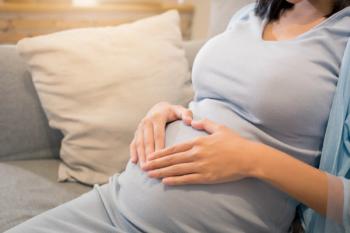
Prenatal air pollution exposure linked to higher childhood obesity risk
A large European study finds that exposure to fine particulate matter during pregnancy may increase the risk of childhood overweight and obesity, especially in children aged 9 to 12 years.
The risk of childhood overweight or obesity may be increased by prenatal exposure to fine particulate matter (PM2.5), according to a recent study published in Environment International.
Study draws data from broad European cohorts
Data was obtained from 10 birth cohorts across 8 European countries. Infants of mothers exposed to increased PM2.5 level during pregnancy were 23% more likely to present with childhood overweight or obesity, with those aged 9 to 12 years showing the greatest link.
“Our results indicate that the gestational period may represent a particularly vulnerable window for the risk of childhood obesity. However, further research is needed to precisely identify the critical periods during which exposure to air pollution might influence this risk,” said Sarah Warkentin, PhD, study author and Barcelona Institute for Global Health (ISGlobal) researcher.
The study was conducted to assess the link between pre- and postnatal air pollution exposure with childhood body mass index (BMI) and overweight or obesity status. Data was obtained from the EU Child Cohort Network, which assesses cohorts of pregnant women and their children across European countries.
Measuring air pollution exposure and BMI
Cohort eligibility criteria included available air pollution exposure data, weight and height data, and uploading harmonized data on a local server. Singletons with at least 1 exposure estimate and an outcome when aged 0 to 12 years were included in the analysis.
Air pollution exposure was based on mothers’ residential address in the prenatal period. Spatial land-use regression was used to measure mean annual concentrations of both PM2.5 and nitrogen dioxide (NO₂). Temporal adjustments were also made to obtain estimates for each relevant exposure period.
BMI outcomes included continuous BMI z-scores and categorical variables of weight status. World Health Organization (WHO) reference curves were assessed when calculating sex- and age-specific BMI. Additionally, normal vs overweight status was based on WHO criteria.
Covariates included child age and sex, maternal education level, prepregnancy BMI, smoking during pregnancy, and area level socioeconomic status during pregnancy. Prenatal air pollution exposure was also included as a covariate during the postnatal analysis.
Obesity and exposure variations
There were 37,111 prenatal mother-child dyads and 33,860 postnatal dyads included in the final analysis. Variations in overweight or obesity status were reported based on cohort and age periods, ranging from 12.3% to 40.5% in patients aged 0 to 2 years, 16.7% to 35.3% in those aged 2 to 5 years, 12.5% to 40.7% in those aged 5 to 9 years, and 10.7% to 43.8% in those aged 9 to 12 years.
The Italian cohort reported higher levels of PM2.5 and NO2 exposure during pregnancy, while cohorts from Greece and Norway reported lower exposure levels vs other cohorts. Overall, prenatal and postnatal NO2 exposure were not linked to childhood overweight or obesity status in any of the cohorts, nor were associations with BMI found.
Key findings on PM2.5 exposure and obesity risk
In comparison, prenatal PM2.5 exposure was associated with increased overweight or obesity status in offspring, with an odds ratio (OR) of 1.23. A minor increase in zBMI was also observed. While associations were not found for postnatal PM2.5 exposure, significant heterogeneity was noted between cohorts.
The most significant association was reported in patients aged 9 to 12 years, with an OR of 1.29 for overweight or obesity status reported for higher PM2.5 exposure during pregnancy. Additionally, a significant increase in zBMI per increments of 10 µg/m3 was reported. Little difference was found when stratifying by individual and area-level SES.
These results indicated a link between prenatal PM2.5 exposure and adverse childhood obesity outcomes. However, investigators noted little evidence about a link with postnatal exposure was found.
“Exposure to pollution during pregnancy has been linked to reduced fetal growth and low birth weight,” said Martine Vrijheid, PhD, director of ISGlobal's Environment and Health over the Lifecourse program.1 “This may be due to oxidative stress, inflammation, problems in placental development, or hormonal disruptions. These same processes could also affect growth and increase the risk of obesity during childhood.”
References
- Exposure to particulate matter during pregnancy is associated with an increased risk of childhood obesity. Barcelona Institute for Global Health. June 25, 2025. Accessed July 1, 2025. https://www.eurekalert.org/news-releases/1088167.
- Warkentin S, Fossati S, Marquez S, et al. Ambient air pollution and childhood obesity from infancy to late childhood: An individual participant data meta-analysis of 10 European birth cohorts. Environment International. 2025;200. doi:10.1016/j.envint.2025.109527
Newsletter
Get the latest clinical updates, case studies, and expert commentary in obstetric and gynecologic care. Sign up now to stay informed.











